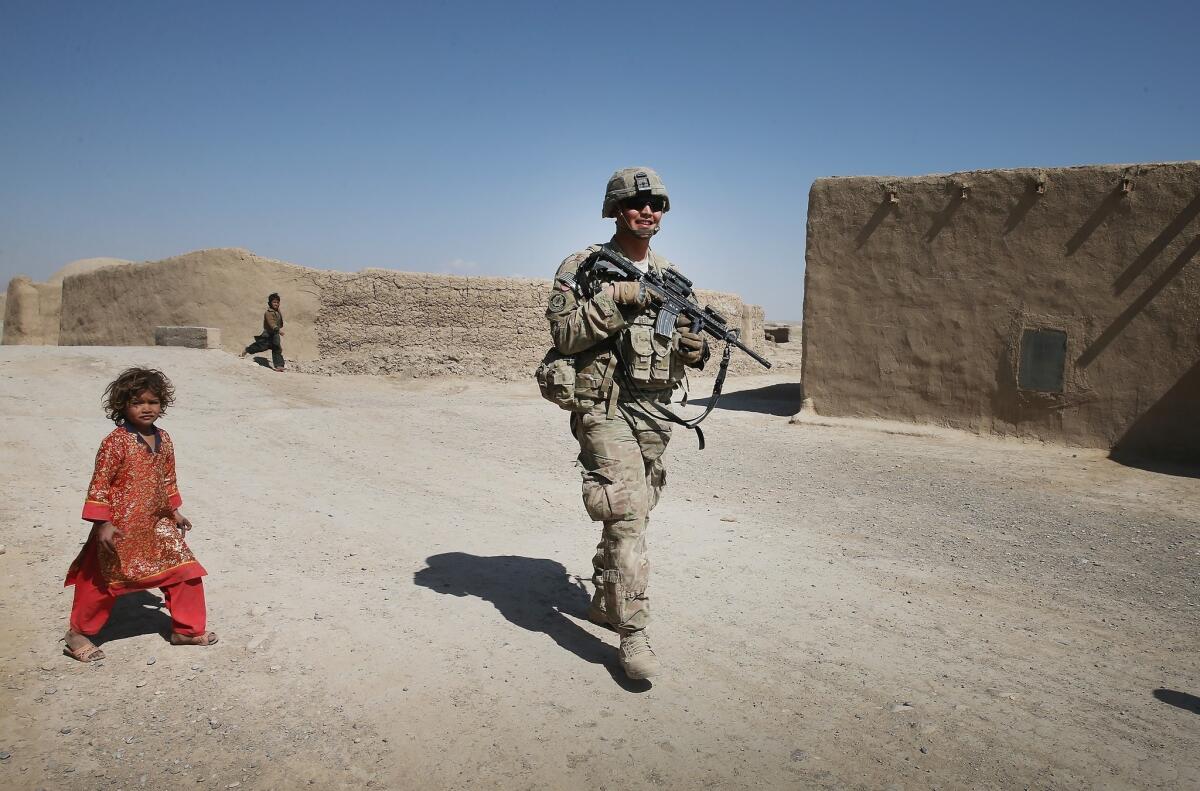Afghanistan security at risk in U.S. pullout, official says

- Share via
BRUSSELS — Security in Afghanistan would decrease steadily if all U.S. troops are withdrawn this year, a senior U.S. military official warned Thursday, two days after President Obama ordered the Pentagon to begin contingency planning for such a pullout.
“I can’t speculate what the outcome will be,” the commander said in remarks to reporters traveling with Defense Secretary Chuck Hagel. “What I can tell you is Afghan forces aren’t self-sustainable at the end of 2014, and over time that obviously will have an impact in terms of the security environment.”
He spoke on condition of anonymity because he was not authorized to discuss military assessments.
Hagel and European defense ministers on Thursday wrapped up two days of meetings at NATO headquarters that focused on the pullout of all foreign forces at the end of this year if Afghanistan’s government fails to sign agreements with the United States and NATO authorizing a foreign military presence after 2014.
Asked whether attacks could increase and the insurgency would gain strength next year without U.S.troops there, Hagel said, “Yes, one of the consequences could be an erosion of confidence.... Yes, there are always risks, there are always uncertainties.”
Afghan President Hamid Karzai has refused to sign the bilateral security agreement that would allow U.S. troops to stay, but Obama said this week that Karzai’s successor could do so. Afghan elections are scheduled for April 5.
Despite the international effort to build an Afghan army and police force that could withstand the insurgency, they are plagued by illiteracy, drug use and desertions. They often fail to provide basic support to troops in the field, including pay, fuel and spare parts.
Gen. Joseph F. Dunford Jr., the top commander in Afghanistan, is proposing to keep about 10,000 U.S. troops, with 5,000 NATO and other foreign troops based in north and west of the country as part of a NATO mission, officials said.
Most of the troops would be assigned to train or advise Afghan units fighting a still-potent Taliban-led insurgency, though some U.S. forces would conduct counter-terrorism operations against Al Qaeda and its affiliates. White House officials have explored leaving fewer U.S. troops, but no decisions have been made, officials said.
Current plans call for gradually withdrawing the 33,000 remaining U.S. troops after the April elections; 10,000 more would rotate in by July. If the Afghan government agrees to let them stay, they would remain after Dec. 31. If not, they also would be withdrawn this year.
U.S. military officers in Kabul, the captial, say the Afghan army, which has taken over responsibility for security in the vast majority of the country, has performed well. But the level of insurgent attacks has stayed steady for the last two years, the senior military officer said, suggesting they could grow more intense if the U.S. withdraws.
The prospect of a complete U.S. pullout has raised concern in the military and U.S. intelligence agencies that large parts of Afghanistan, especially in the south and east, could once again fall under Taliban control, increasing the likelihood that remnants of Al Qaeda could again operate from its territory.
U.S. officials said in December that intelligence agencies had warned in a secret assessment that security would decline sharply if the U.S. withdraws and that Kabul could see sharply higher insurgent attacks within a year.
The intelligence agencies also warned that the U.S. ability to launch armed drones and other counter-terrorism missions against Al Qaeda and other extremist groups in Afghanistan and Pakistan could become more constrained as political opposition to such operations grows in both countries, officials said.
david.cloud@latimes.com
More to Read
Sign up for Essential California
The most important California stories and recommendations in your inbox every morning.
You may occasionally receive promotional content from the Los Angeles Times.











